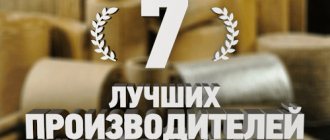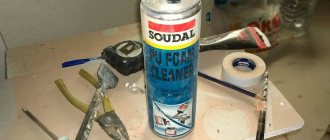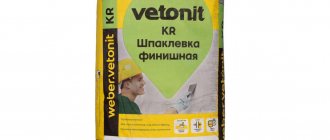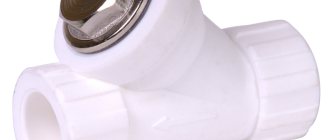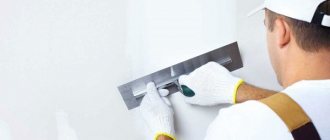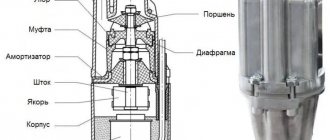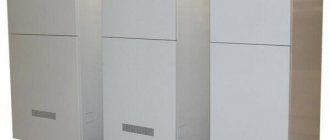Today there are many manufacturers, each of which is trying to enter the world market of leading products. This is the reason why well-known manufacturers improve the quality of their products.
Popular products
Isover mineral wool rightfully occupies a leading position. What distinctive features, technical characteristics of Isover mineral wool 50 mm thick and much more about this type of product will be described in this article.
Description
The structure of mineral wool is fibrous. Natural minerals are used in production: sand, limestone and soda. When exposed to heat, the finest threads are drawn from the mineral components. They turn out thin and light. Subsequently, the fibers are made into mats or rolls that act as thermal insulation material Isover “Classic”. To give the mats elasticity and density, binding components of synthetic origin are added to it. For example, it could be polyurethane, the content of which in Isover mineral wool is small.
Installation of thermal insulation, to facilitate the execution of tasks, provides two options for finished products - mats and rolls. Regardless of the type chosen, the weight of the material allows you to carry out insulation yourself.
After compression, Izover mineral wool is able to take its original shape without loss of quality. This property is well used by manufacturers for economical transportation. The insulation is rolled up by compression, decreasing in size up to 6 times. Thanks to this packaging method, it is possible to save more free space for stacking additional product packages.
Glass wool NEMAN
The products of the Belarusian glass factory meet the highest requirements. NEMAN glass wool has excellent thermal insulation and sound insulation properties, is not fire hazardous and is durable. The raw materials for production are domestic products.
Sevenfold compression of the material reduces transport costs.
Glass wool is produced in roll form. This facilitates the work on thermal insulation of pipelines and insulation of industrial installations.
Neman glass wool is mainly used for insulating pitched roofs, installing suspended ventilated facades and suspended ceilings. It is possible to use glass wool when carrying out thermal insulation work both outside and inside the building.
The topic of modern thermal insulation materials, both imported and domestically produced, continues to interest readers, because thanks to these materials it is possible not only to reduce home heating costs, but also to significantly reduce the cost of building construction. A leading specialist advises.
Peculiarities
Izover insulation has some features:
- The material has good thermal conductivity. If we consider the Isover product line, the warmest one based on quartz is Isover “Warm Walls”, and among basalt insulation products - Isover “Master of Warm Walls”.
- Soundproofing qualities. The dense weave of fibers prevents noise vibrations from penetrating through the thickness of mineral wool. The main obstacle to the penetration of sound is the air that fills the voids between the fibers.
- Any Isover model is considered completely non-flammable. This feature allows the use of this thermal layer in rooms of any type.
- Vapor permeability. This quality of mineral wool is at a low level. In rooms with high humidity, Isover insulation quickly becomes saturated with moisture, losing some of its thermal insulation qualities. To provide protection to the product, a vapor barrier is initially laid, after which the installation of mineral wool is allowed. The gap between the front trim and the outer layer of insulation provides additional protection.
- Durable. Having installed Izover insulation once, you can forget about re-installation for 50 years or more. The material owes this feature to its structure.
- Environmentally friendly. Scientists have repeatedly conducted studies to identify side effects on human health from insulation, but so far no such effects have been found.
Disadvantages of Izover heat insulator
I cannot single out any disadvantages of the material. Here are just a few features that need to be taken into account when using it in your work:
- If you use fiberglass-based material for insulation, you must carefully protect the skin and mucous membranes. For this purpose, respirators or gauze bandages, safety glasses, gloves and overalls are usually used.
Installing Izover requires only special clothing, goggles and respiratory protection.
It is especially important to follow this advice when you plan to work in your attic during the summer. I often saw bare-chested construction workers who then itched and coughed for a week. By the way, showering does not help remove fibers from your skin.
- When installing insulation, take measures to isolate the premises from glass dust. To do this, I advise you to use a special film, which is laid before covering.
I want to tell you again so that you do not confuse Izover fiberglass insulation with domestically produced glass wool, which is used to wrap water pipes and heating mains. It's like heaven and earth. And as soon as you use the material in your work, you will immediately see for yourself.
Dimensions
Products are produced in various forms. These can be rolls, whose rigidity has differences and mats. The thickness of the single-layer material is offered at 5-10 centimeters. Each layer of two-layer insulation is 5 centimeters.
Dimensions
The width and length of the slabs usually have standard dimensions of 1 meter by 1 meter, but some manufacturers offer mats with other indicators. Rolled copies are produced in a standard width - 1.2 meters, but have differences in length - from 7 to 14 meters. The total area of one roll\ is produced from 16 to 20 m2.
Characteristics
Isover insulating material can be used to soundproof walls, floors and ceilings. In addition, there are materials that are suitable for indoor use, that is, insulation and soundproofing of walls, ceilings and flooring. Depending on the marking of the material, it can be produced in any size and shape.
Photo: Specifications. Author: Anfisa Palmova
To insulate a residential building from sounds and cold, the material most often used is “classic” or with the abbreviation “K”. Another parameter that may influence the choice of material is its density. Everyone understands that soft insulation is much more effective at blocking cold air and sounds that can come from the street. Each type of isover is suitable for specific purposes, therefore the variety of slab thicknesses plays a major role when choosing an insulating material.
Varieties
Thanks to its excellent characteristics, Izover insulation has found wide application in various areas for exterior and interior decoration of the house. Insulation will be indispensable for insulating floors, walls, attics or attics. Compared to other insulation materials, Isover is much cheaper, which adds to its popularity.
Izover insulation is divided into several varieties, each of which is designed to fulfill its role.
Isover "Classic Stove"
A slab version of insulation is designed for thermal insulation of the following places:
- Insulation of the building facade.
- Creation of a heat or sound insulating partition.
- Thermal insulation of suspended ceiling.
Stove
Production is carried out with the following indicators:
- A slab copy marked 50/E/K, produced in 14 pieces in one package. When laid, the products occupy 10 m2 of usable space. The packaging volume is 0.5 m3.
- Marking 100/E/K indicates the thickness of one sheet is 100 millimeters. One package contains 7 sheets, which can be used to insulate 5 m2 of cold surface. Available in container volumes of 0.5 m3.
Isover "Classic Twin 50"
Rolled varieties of heat-insulating material are used to cover large areas. Thus, it is possible to reduce the number of joining seams.
Applicable:
- As external insulation of facade walls.
- As a heat-insulating material for the roofing part of the house - attic or attic.
Available:
- In rolls. One package includes 2 strips, each 6150-8200 millimeters. The covering area of one roll is 15-20 square meters. Standard insulation thickness is 50 millimeters.
- Construction stores offer another type of product, “Classic Twin Promo 80”. The difference lies in the thickness of the product - 80 millimeters, and the coverage area - 18 m2.
Isover “Warm Home”
Recommended for use:
- Insulation of floors whose design includes logs.
- Thermal insulation of floor slabs.
Warm home
Two different types are produced:
- 2 strips per roll, 50 mm thick. The standard width is 1220 millimeters. Length 5490 millimeters. Covered surface area – 13.4 m2. The volume of the finished package is 0.67 m3.
- The difference between this type of product is the length of the strips - 7000 millimeters, and the correspondingly changed coverage area - 17.1 m2. These indicators could not affect the packaging volume - 0.85 m2.
When unfolding the rolls, their total thickness is 100 mm, which allows the use of 50 and 100 mm insulation of walls or floors.
Isover “Warm Roof”
Recommended places of use:
- Attic rooms.
- Insulation of pitched roofs.
Insulation of the following places is also possible:
- Lag floor construction.
- Walls with lined lathing.
The packaging is available in two types. The first one has dimensions of 50 x 1220 x 5000 mm, where the covered area is 12.2 m2, and the packaging volume is 0.61 m3.
Important! The Izover “Warm Roof” material has a high degree of moisture resistance and thermal conductivity.
Isover "Sauna"
Analyzing the name of the thermal insulation material, it becomes clear that it is intended for rooms with high humidity:
- Floor with logs.
- Walls with assembled frame.
- Ceilings.
One type of packaging with dimensions 50x1200x12500 mm. Covered area – 15 m2. The volume of packaged products is 0.75 m3.
The vapor barrier layer is a foil coating fixed to the outside of the insulation. It is used mainly for rooms with a large area, since one strip can cover a length of 12.5 meters. This advantage reduces the appearance of cold bridges.
Isover "Warm House Stove"
The main place of insulation is the floor structure. Using a thickness of 100 millimeters allows the use of thermal insulation material:
- Facade wall insulation.
- Internal thermal insulation.
- Frame partitions.
Warm House Stove
Manufactured:
- One package includes 14 mats of 50x610x1170 millimeters. Covered area – 10 m2. The volume of packaged products is 0.5 m3.
- One package including 7 mats – 100x610x1170 millimeters. Coverage area – 5 m2. The volume of packaged products is the same.
Isover “Warm Walls”
Thermal insulating product, recommended:
- External insulation of the building.
- Installation of thermal insulation for external finishing.
- Interior decoration.
The product is similar to the “Warm House” slabs and has two types of packaging.
Important! Moisture resistance is enhanced, so it can be easily used for external insulation.
Isover "Quiet House"
Used as thermal insulation:
- Suspended ceilings.
- Frame partitions.
- When laying between joists on floors and ceilings.
- Interior finishing.
Available in packs of 14 sheets. Each is 50 millimeters thick.
Calculation
The main requirement for profitable and reliable sound insulation is correct calculation. Using laser measuring equipment, you can make calculations with maximum accuracy so as not to buy extra material. Of course, if you don’t have any skills or knowledge, then it’s better to entrust it to specialists who will calculate everything quickly and efficiently.
Photo: Using this table you can calculate the amount of material required. Author: Anfisa Palmova
You can carry out soundproofing with isover yourself if you have an understanding of the product and how to install it. As for the choice of sizes, it is necessary to select based on the characteristics of not only the room, but also the insulating layer. If possible, then for installation work it is better to invite a professional who, in just a few minutes, will make calculations on the thermal and sound insulation qualities of the house and the insulation itself.
Interesting! Many people believe that to obtain effective and reliable sound insulation, you need slabs or rolled sheets of large thickness. In fact, everything is not so radical. Despite the large selection of materials, it is worth taking a product with a thickness of no more than 10 centimeters. This is exactly what is needed to create comfortable conditions.
The same amount of material is selected depending on the size of the surface to be treated. It is important to take into account that during installation the slabs should not be pressed in too much. They should fit snugly, but you also don't want them to fall out. If the width of the soundproofing slab is 60 centimeters, then the distance between the logs or structural elements will be 56-58 millimeters.
Important! Not only the effectiveness of the insulation, but also the cost of soundproofing the house depends on the correctness of the calculation. There is no need to save on heat and sound insulation, because convenience and comfort inside an apartment or house depend on this.
Advantages and disadvantages
Advantages:
- Effective heat conservation.
- Insulation of any part of the building.
- Possibility of creating a noise-insulating layer. The sound transmission capacity is reduced when laying a 100mm double covering.
- The tight fit of the Isover insulation eliminates the need to use fasteners.
- The ability to compress is perfectly reflected in the transportation of products.
- Environmentally friendly.
- Isover thermal insulation is made using components that are not prone to fire. This is the reason to consider mineral wool non-flammable.
- It is resistant to fungus and mold.
Flaws:
- Isover is expensive.
- Use is not recommended when there is a high load on the surface of the insulation.
- Without wearing protective clothing, insulation can cause trouble to human health.
Wearing protective clothing
Minwata Rockwool
The main feature of the laboratory production of Rockwool mineral wool is that it is identical to natural conditions during a volcanic eruption.
This effect has a positive effect on the quality of the building material - the arrangement of the fibers is chaotic, due to which the following properties are achieved:
- combustion resistance
- at temperatures up to 1000 C they do not even melt, - excellent thermal insulation properties
- up to 0.046 W/m K. - vapor tightness
- not affected by water
- high sound insulation
- increased resistance to mechanical stress.
The Rockwool brand has become widespread among construction companies and private consumers in the domestic market due to its perfect fire safety, good hygroscopicity and sound insulation and relatively low cost. Prices from different suppliers may vary widely, because... Some sellers offer immediate installation work and delivery to the site.
There are also different types of this insulating material, for example, the price of Rockwool Light Butts starts at 1,873 rubles for 1000x600x50mm slabs, and some facade varieties of mineral wool can reach 7,000 rubles for the same volume.
Recommendations for working with the material
Carrying out work requires compliance with safety regulations. To minimize the occurrence of traumatic situations, always wear protective clothing, gloves and a respirator.
Considering the installation process, there are practically no differences from the installation of other types of thermal insulation materials.
- Prepare the surface. This stage involves cleaning the installation site from large and small debris.
- Install the frame. If the walls are insulated, then initially it is necessary to assemble the sheathing. In the case of a roof, the rafter system will serve as the frame.
- Maintaining a pitch between the beams of 600 millimeters makes the fit of the insulation to the sheathing as tight as possible. When laying the rolls, leave a small allowance of about 2 centimeters, which will eliminate the need for fastening.
- Products of the same brand can be used as vapor and waterproofing.
- Ventilation gap. In all types of sheathing, installation of a ventilation gap is required. The exception is floor insulation.
Ventilation gap
- Before installing the facing covering, make sure that there is a gap of a couple of centimeters between the insulation and the finishing coating. This will ensure sufficient air exchange.
Conclusion
In conclusion, I can say that the price of this material is consistent with its high performance properties. You can once again verify this by watching the video in this article . If you have any questions regarding its use or, conversely, you want to share your own experience, please write about it in the comments to the article.
Did you like the article? Subscribe to our Yandex.Zen channel
August 28, 2016
Insulation materials, Thermal insulation
If you want to express gratitude, add a clarification or objection, or ask the author something, add a comment or say thank you!
Brand history
The rights to the brand belong to the Saint-Gobain company from France. Its main office is located in Paris, and its founding date is 1665. It appeared at the direction of Louis XIV and produced glass and mirrors. The name Isover insulation is formed from the words “glass” and “insulation”. In our country, the company's products were initially known under the Uteplyaev brand.
Over more than 350 years of history, Saint-Gobain has grown into an international industrial group represented in 67 countries and employing over 170 thousand employees. Sales in 2015 amounted to 39.6 billion euros.
Soundproofing Izover “Quiet House”: The company is included in the following ratings:
- The hundred largest industrial enterprises according to Forbes.
- Top 100 innovative organizations in the construction sector.
- Best Employer - 2016
Experience and the latest technologies have made the company a world leader in creating a comfortable living space. The main activities of Saint-Gobain are:
- Innovative technologies in the field of high-tech products in the production of ordinary and special glass.
- Building materials represented by ISOVER, ISOTEC, ISOROC brands in insulation; GYPROC in gypsum solutions; WEBER dry mixes; ECOPHON for acoustic ceilings and panels; in siding and tiles - CERTAINTEED; RAM pipes
- Distribution activities in the field of building materials.
Saint Gobain Campaign:
The company's products have been known on the Russian market for more than 20 years. Ten years ago, a plant was opened in the Moscow region (Egoryevsk), and since 2011 in Chelyabinsk, the Minvata company began producing stone fiber insulation. All products have international environmental certificates and comply not only with internal corporate standards, but also EN 13162—ISO 9001.
Types of thermal insulation
All materials produced under the Isover brand differ from each other in functional purpose and physical properties. Industrial and household categories of insulation are supplied separately. There are several of the most popular varieties of products from Saint-Gobain.
Types of thermal insulation Izover:
Minvata Izover KL 34
This is a mineral plate 5 or 10 centimeters thick. It is used in frame construction and does not require additional fastening with dowels. These products are characterized by high elasticity, which maximizes the scope of application.
The insulation is packaged in a bag. After opening, it instantly takes on its original appearance and is ready for installation. Another advantage of this modification is low shrinkage. Among the technical characteristics it should be noted:
- Thermal conductivity – 0.034 W/μ.
- Vapor permeability – 0.53 mg/mchPa.
- Nominal compression at 2 thousand Pa – 60%.
- Return to normal state – 98%.
Thermal insulation of walls and floors:
This material is completely non-flammable with operating temperatures from -70 to +250 degrees. If it is completely immersed in water, it will absorb moisture no more than 5% of its mass, and when wetted - no more than 1%.
Pitched roof
This modification is intended for use as roof insulation. Available in the form of mats measuring 117x61 centimeters and 5-10 cm thick. It is almost one hundred percent hydrophobic. This is its main advantage over its competitors - the ability to use it in conditions of high humidity without loss of properties.
Application
Its use in construction also depends on the density of mineral wool:
- For horizontal surfaces of rooms, a density of 35 kg/m³ is better.
- For interior partitions, ceilings and internal floors, mineral wool with a parameter of 75 kg/m³ is used.
- For exterior finishing of the house - 125 kg/m³.
- When thermally insulating interfloor floors, I use mineral wool with a density of 150 kg/m³, and for load-bearing structures - 175 kg/m³.
- Insulation with a density of up to 200 kg/m³ is used under a concrete screed, for a foundation or roof.
Installation of thermal protection
A wide range of uses implies several options for working with Izover materials. There are 4 technological options in total:
- Metal frame structure.
- Wooden building.
- Using staples.
- On the plinth.
When installing thermal protection, seek help from a specialist
When assembling a thermal insulation complex, the physical properties of the materials should be taken into account. It is worth providing additional protection from moisture using special films. When laying a roofing or wall pie, a certain order of layers should be observed. The vapor barrier is usually pulled from the inside to prevent the formation of condensation. The waterproofing is installed outside to protect against precipitation.
It is very difficult to choose the best of the many varieties of Izover products. Each type has its pros and cons. However, due to the diversity of the assortment and the optimal price-quality ratio, this product is recognized as the most popular.
All about insulation and thermal insulation Izover:
Throughout the entire existence of man on Earth, people have always strived to improve their living conditions. One of the primary tasks was to ensure that housing met all needs. Creating a warm and cozy “nest” became possible with the advent of modern building materials.
In the 20th century, glass wool was often used to insulate houses. This material has proven itself well and it was on its basis, with the help of the latest developments, that a completely new product was created that shook the construction products market - Isover insulation, competitors KNAUF, TechnoNIKOL.
Thermal insulation materials Izover are also made on the basis of stone fibers, and are better known as basalt insulation.
Technical characteristics, properties and a wide range of applications allow Izover thermal insulation materials to occupy a leading position among world analogues. The choice in favor of the products of this manufacturer is evidenced by numerous positive customer reviews. According to statistics, during the construction of every third European house, Izover products were used, for example, for insulating walls, floors or ceilings.
Isover (Egoryevsk, Chelyabinsk)
More than 20 years ago, the French concern Saint Gobain officially opened the Russian building materials market. Over the past 10 years, the company's management has abandoned the import of mineral wool to Russia and opened its own production of products under the Isover brand in the Moscow region. Today, there are two full-cycle production sites in the Russian Federation - in Yegoryevsk and Chelyabinsk.
Isover mineral wool is suitable for ventilated facades and under plaster; for pitched and flat roofs; into internal partitions and doors. The materials are developed in accordance with the operational features and installation specifics for each specified case. The company's catalog presents four main groups:
- Isover warm – thermal insulation;
- Isover quiet - Shumka;
- Isover professional – universal insulation;
- Isover for a house/apartment - mineral wool with a compromise combination of cost and performance.
The list offers 24 insulating material options.
All plate, roll and blown-in wool versions are packaged in heat-shrinkable polyethylene. This makes it possible to reduce the volume of insulation ready for shipment by 3-5 times (relevant for more efficient transportation).
The positive aspects of Isover are the variety of options. Can be made to your size. Among the existing advantages, the ease of use when filling hard-to-reach areas with blow-in cotton wool stands out.
The downside is the need to use highly specialized equipment (true only for the blown-in version of mineral wool).
Main characteristics of Isover
| Isover Warm Roof | Isover Blown Wool | Isover Soundproofing | |
| Purpose | Insulation of roofing systems | Thermal insulation of hard-to-reach places | Soundproofing of premises |
| Dimensions, mm | 5 000х1 220х50 | 1 000х440х400 | 1 170x610x50 |
| Density, kg/m³ | 16 | 30-50 | 14 |
| Thermal conductivity, W/(m K) | 0.037 | 0.032-0.038 | 0.038 |
| Quantity per package(pieces/m²/m³) | 2 / 12 / 0.61 | — / — / 0.176 | 14 / 10 / 0.5 |
| Price, rub/m³ | 1 178 | 1 200 | 1 617 |
Video instructions from Isover on weaving structures:
https://youtube.com/watch?v=TMLhlO86hf0
How to choose roof insulation
Future requirements for thermal insulation depend on the type of roof your home has, since it can be flat or pitched, and can also have residential and non-residential attic space.
Selection principles:
- roofing insulation must be environmentally friendly;
- have excellent sound insulation;
- low thermal conductivity;
- frost resistance;
- must be fireproof;
- must retain its geometric parameters;
- have dimensional stability;
- small mass;
- be durable.
Recommendations to follow:
- for a pitched roof it is better to use materials with increased density;
- for non-load-bearing structures it is recommended to use the least rigid insulation materials.
Best answers
Elena:
You named different brands. We need to look at the insulation. If the humidity is high (or at risk). then foam plastic (plain or extruded) is better. If there is no moisture, then cotton wool is more environmentally friendly. At normal humidity, all modern insulation materials have approximately the same heat transfer resistance coefficient.
Special opinion:
insulation is better in mats than in rolls. their other parameters are almost the same.
Andrey Denisov:
there is also penoizol
Alexei:
read - what they are made of, the smelliest ones are those with phenol-containing fiber.
Marina Alskaya:
The difference is in cost and durability of materials. But no matter what you choose, installing insulation from any of these companies is equally difficult. If the walls are insulated, then waterproofing is also necessary.
Ecowool-Voronezh:
Manufacturer. Each manufacturer has materials of different prices and different densities, some have “eco-friendly”, some have “soundproofing”, which is basically the same thing. They differ in features and density. There are different densities for different applications. The higher the density, the colder it is. Everyone is afraid of moisture - a vapor barrier is required. The thermal resistance coefficient for all is indicated for absolutely dry material.
HUMAN:
I used Rockwool to insulate the house... a house according to Norwegian technology with autonomous heating... permanent residence... cool in summer, warm in winter within 22 degrees... 100mm of insulation in terms of thermal conductivity is equal to 300mm of timber...
Using wool of different densities for insulation
The choice of insulation according to the indicator under consideration depends on the place of its use. It is not always necessary to overpay in order to get the desired result. Most often, the facade, walls, roof and floor are insulated. These are the options that are worth considering.
Facade
When selecting insulation for a facade, you need to pay attention to the mass and density of mineral wool. For most buildings, weighting is very undesirable. It is also worth paying attention to the possibility of subsequent finishing, because this indicator is also influenced by
So:
It is also worth paying attention to the possibility of subsequent finishing, because this indicator also affects this. So:
- If the facade is equipped with a ventilated one, then a sufficient density is 45-100 kg m³. Here the cotton wool is laid into the sheathing and there will be virtually no stress. The main tasks for this type are to maintain its shape and not sag under its own weight, and the indicated indicator is enough for this.
- If the facade is to be plastered over insulation, then the density should be above 100 kg m³, optimally from 145 to 165. This will allow the use of any types of plaster mixtures, including bark beetle, barenkom and even mosaics. Since this mineral wool will have to withstand heavy loads during installation, it must be securely fastened; for this, a system with dowels is used in combination with adhesive fastening.
Wall insulation
In this case, the selection is made based on ease of installation, that is, the density should be at least 30-45 kg m³. In this case, you need to insulate from the inside; MDF boards or drywall should be screwed onto the material on top. In order to mount such mineral wool, you need a lathing; rolls or sheets are placed in it.
Roof
Since roof insulation work is carried out at heights, the main criteria when selecting mineral wool are light weight and ease of use. Material with a density of 30-35 kg m³ can be pleased with these qualities. Its sound and heat insulation properties will be excellent, and at the same time light weight. Installation can be carried out using two methods:
- Using a construction stapler.
- In the lathing with a vapor barrier closure.
In both the first and second cases, it is necessary to cover the insulation with finishing material on top.
The selection of mineral wool in this case depends on the type of floor finishing. So, if these are sheet materials, for example solid boards, laminate, etc., then a density of more than 30-45 kg m³ is not needed. After all, there will be no pressure on the cotton wool; it is placed between the lags.
But now manufacturers offer material with an indicator of 200-220 kg m³; such wool can be mounted on the base and filled with cement screed on top. Of course, the price of such material is quite high, but the ease of handling is the greatest possible.
